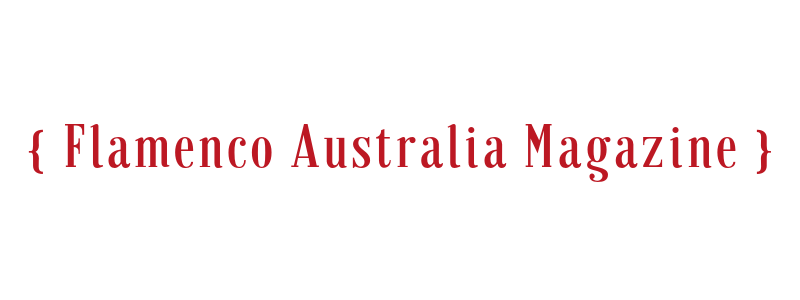Day 9 - Córdoba Guitar Festival
Dear Paul and Esteemed Friends,The 9th day of the 30th Edition of the Córdoba Guitar Festival was another intense day of class, and The Concierto de los Alumnos in the historic Sala Oríve.The 9th day was the 4th day of class, and here I will give you some more insight to the 3rd and 4th days of class. The 3rd day of class began with José Antonio listening to each student in the alto level of the course play non-rhythmic or free toques. Commonly referred to in cante as hondo (deep, profound) or cantes grandes. But these forms do indeed have an inner rhythmic impulse that must always be present, as all of our faculty have expressed repeatedly in the three years I have been in the course. He would also comment on falsetas that were not characteristic of the particular toque or form, (genre) either in the cante or in the toque. He also imparted to us that the salida from Fandangos Grandes or from Malagueñas must be present in transposition to the other profound relatives to the Fandangos, (Malagueñas, Tarantas, Granaínas, Mineras, etc). If those salidas are not present, it does not sound indicative of the form or genre, and one cannot say that their composition is of that particular genre. Also if one opens a Granaína in E minor, it is dangerous. Without a salida to the Andalusian cadence in B Greek Doric, immediately, it will sound like a Vidalita or a Milonga, depending on the meter you choose for the Granaína. It is even more dangerous to end a Granaína in Em. One could play B augmented as a final chord and get a similar effect without breaking the rules of the Andalusian cadence.Later in the class of Manolo Sanlúcar, he spoke of the compositional process. He said this to the class after a student played, “It is important to have a process and manner of composing, the same way you have a manner of getting dressed, and the hair dresser has a manner of cutting your hair, and you have a process or manner of grooming yourself." Manolo added, “How can composition not have a process… except whim?” He went on to show us his process and one result of it, the fifth track on Locura de Brisa y Trini. He played it over and over again… live… and talked about it as he played… and in between uninterrupted playing. It was spellbinding and surreal. He went on to say that this concept is historic and not understood by many outside of this room of present company. He said that when Carmen Linares began to use this concept, (born from intuition) freely, it became part of the flamenco lexicon of cante. One must understand this system in order to effective accompany Carmen Linares in all of her musical being, therefore it is unquestionably valid.Day 4 of class began with José Antonio telling us that velocity is a result of knowing how your hands work when you play slowly, and softly, and that when you play louder or faster, the movement should be no different. This is profound, and José Antonio, is certainly showing us here that he has completed his training, and is indeed a Jedi, and strong with the force.
"Velocity is a result of knowing howyour hands work when you play slowly"
sala-orive-cordoba
Another unrelated tip, C minor 6th, can also be spelled as a B7b9 (no root) in Granaínas and be used as a substitution for the tonic chord, but not used as a final chord.Maestro Sanlúcar says that a common problem is that young guitarists are not using important identifying features of the toques, such as the D7/F# in Tarantas, and Granaínas. All of our faculty have imparted this to us repeatedly… well to those who have been here repeatedly. They will surely repeat this information several times before the course ends.It is not necessary to change the scheme of the toques in flamenco. There has been one new form in the last 70 years, Rondeñas. Manolo also says that a Guajíra is actually a Vals Perúano, and that if your work does emphasizes the ¾ meter, even as the 6/8 is present, it is a Vals Perúano in the Greek Doric Mode, or Minor, or whatever mode one is playing in that meter.Another axiom Maestro shared with us is that one needs to play with their own identity, not to play one phrase in one character, and then sound like another artist in the next. “Study the forms (recordings/artists) to study their treatment, for understanding.Another is that the raised third scale degree should only be used melodically at the final chord in resolution, for example in the common arpeggio lick that is played on beats 7-8-9 in Soleá, should use G-natural to create discourse, tension, and resolution.There is more that was said that is in Manolo’s book, Sobre la Guitarra Flamenca: Teoría y Sistema…. Ediciones las Posadas, Córdoba, 2005. So I will say for now, get the book, and after you do, if you need my translation, send me an email at cwhitehead@csufresno.edu I played in The Concierto de los Alumnos last night for the third time. The Sala Oríve is truly an impressive place… I can say it is the oldest hall in which I have ever played. The Sala is one of the most beautiful, spectacular, and awe-inspiring places in the world. You have to come here just for this! And the sound there is so good it is beyond words. My personal video of my performance is of poor quality, but I will see if I can get my hands on a better recording of my performance to share with you! Hasta pronto! Corey




